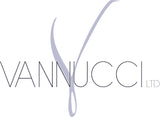The November Birthstone - Autumnal Citrine
It’s November, and that means a new birthstone! Whether you’re a November baby, or a just a gem head like me, read on to learn about this beautiful quartz stone. Where is it found? How is it used in our jewelry? Why is it November’s birthstone? Enjoy!
What is Citrine?
The citrine stone is a crystalline mineral in the quartz family, and following feldspar (whose gem varieties include moonstone), quartz, on the whole, is the second-most abundant mineral found in the earth’s crust. Citrine, however, is a pretty rare variety of quartz, adding to its desirability.
Citrine crystals are beautiful and alluring yellowish-orange stones that are trending upward in the jewelry community due to their autumnal colors. In fact, “citrine” comes from the French word “citron,” which means lemon, and citron is derived from the Latin word citrina, which means yellow. A nice full circle of citrine etymology!
Physically, the citrine stone is composed of two of the most abundant materials on earth, silicon and oxygen (Si02), but that simplicity certainly doesn’t take away any of its beauty.
Why is it the November Birthstone?
Citrine is said to radiate positive energy and act as a motivator for those who wear it, and was first sought as a gem and jewelry in the early B.C. years.. Some ancient mentions of the citrine crystal also refer to citrine stones as “the gems of success,” and other folklore also relates it to monetary fortune and prosperity.
Some modern healers also say that citrine is a great stone for mental clarity and self-awareness, and it’s yellow-orange color comes from holding the sun’s power which equates to growth and positivity.

In addition to the energy it is said to omit, the color also reflects the hues of autumn, which is why many believe it is the perfect birthstone for November babies.
How do I Use It in My Jewelry?
Though citrine can be manufactured, natural stones are what I pride myself on using, and citrine is no different. Behind topaz, citrine is considered by many to be the second-most sought after semi-precious gemstone, and for good reason. It’s beautiful!
The physical properties of the gem also make it a great one to work with. Citrine deposits are often quite large, meaning pendants can, too, be quite large. Citrine is very easy to shape, and almost all major gem cuts can be done to a citrine stone. Citrine is also known as a “dichroic” gem, which means it splits light, causing additional appeal to the eyes!
Citrine crystals rarely have inclusions, and they are still relatively hard (a 7 on the Mohs scale), but not usually recommended for high-exposure areas for jewelry, like rings, as they can scratch easily.
Necklaces, however, are great for these gems, and you can see what they would look like here with my build your own charm necklace tool!
Imitation Possibility
As the citrine variety of quartz has, indeed, become more and more of a rarity, imitations are becoming more of a regularity. Both amethyst and smoky quartz (more abundant materials) can be treated with heat to resemble a citrine gem, but, simply put, it is not.
Heat-treated stones are technically still natural, as they aren’t grown in a lab, but though they may look very similar, they do not possess the same allure and aren’t believed to carry the same intellectual properties as natural citrine.
Luckily, it’s very easy to determine if something claiming to be a November birthstone is actually citrine. The aforementioned dichroic coloring will split light when shined directly on the stone (meaning it will appear to be different colors depending on your angle). This does not happen with heat-treated, faux-citrine. 
Time for Some Citrine Jewelry?
Even if you’re not a November birthstone, the citrine crystals make for a beautiful addition to any jewelry collection and tend to really pop this time of year. Our build your own charm necklace tool is a good place to start seeing what kinds of pieces you can add to your collection with this durable, beautiful, and often magical stone.


